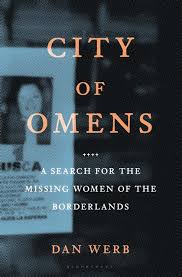Life on the Margins in a Kingdom of Cartels
On the Rise and Fall of Mexico's Narco Empire
The room in Tijuana was white, small, hot. The sounds of the street below drifted in through the window on an endless loop: slow winding trumpets, an accordion vamping, the corrido blaring fuzzily from small tinny speakers, making it sound like a pile of dirt had been kicked over the band. Rosa, the woman I was interviewing, stared at me, flinty and impatient, with thick black eye shadow and raven hair falling past her shoulders. She chewed on her fingernails while she talked, no matter the question, speaking in the same arrhythmic cadence, the words speeding and piling into each other like the beat-up taxis outside, then suddenly slowing and trailing off into nothing. There was no excitement or pretense, just words and memories told one after the other. Rosa was 50 years old. She had about three clients a day. They usually paid her 100 pesos each, about $6.50.
“Well mija,” Rosa said to my interpreter, “there were so many clients I used to be able to choose between them. I robbed a lot too, wallets, money . . .” There was no joy in her voice. In the 1980s, Rosa explained, she made a good income and avoided dangerous clients, easy enough when the supply of johns flowing in from the United States was so plentiful. This was a time before the collapse of the Colombian cartels, when Mexico was relatively peaceful and the border hadn’t begun to harden like cement. Money still flowed freely from north of the border into the city. Within the base economics of Tijuana’s sexual market, Rosa was young enough to attract a lot of clients but old enough to know how to satisfy mature men. The clubs on Calle Coahuila, the red-light district’s main drag, were booming. It was a time of excess.
“Well, you could find drugs anywhere and of better quality,” she said. “There were people everywhere and you could see people pulling necklaces from women’s necks, stealing and robbing in the middle of the day, a lot of violence everywhere.” Thirty years later, I met Rosa in the field offices of Proyecto El Cuete; she was one of the hundreds of women participating in a study of drug-injecting populations in Tijuana. The longer Rosa talked, the more I noticed her jerky eye movements and anxious hand-wringing. There was a time limit to this interview. I wondered how long it would be before she needed to find her fix again.
*
Rosa’s journey to the Zona Norte mimics the larger path Mexico took as it became home to Latin America’s most powerful drug traffickers. Before she came to Tijuana, Rosa was introduced into the sex trade in Guadalajara, in Mexico’s southwest. At that time, the city was being used as a laboratory to create Mexico’s first modern cartel. Guadalajara in the 1970s was like today’s Tijuana, a town exploding under the pressure of migrants from all over the Americas.
Mexico’s second largest city—La Ciudad de las Rosas, La Perla del Occidente, a hyperbolically beautiful place—is also the capital of the state of Jalisco, a mountainous southern Mexican state that has long served as a key transit hub linking Andean cocaine to North American consumers. The city is far from the U.S. border, nestled near a lake safe up in the mountains, remote and untouched, or at least it was; today the city groans under the weight of violence, the corruption and drug trade powering a cycle of homicides by members of the Sinaloa Cartel and the police, bullets catching innocents every so often. Before all that, though, back in the 1970s, Guadalajara was largely peaceful. There was little to indicate that it would soon become the place where the blueprint for Mexican cartels as we now know them—fearsome, powerful, and utterly cruel—would be developed, in the form of the Guadalajara Cartel.
The Guadalajara Cartel emerged as a power player in 1980, but its formation wasn’t an accident of fate or a case of a town simply backsliding into criminality. Guadalajara was chosen by powerful people as the setting for the intentional fashioning of a new breed of criminal organization. In the late 1970s, the U.S. and Mexico were embroiled in Operation Condor, a bloody military campaign aimed at drug traffickers living in the mountain villages of Sinaloa, a state north of Jalisco along the Sea of Cortez. The mission of Operation Condor was to destroy the drug traffickers’ infrastructure and product, and to kill any traffickers they came across; the campaign is remembered for its uncompromising barbarity. While it temporarily weakened the trafficking networks being cemented from Colombia to the United States, it also led to the spread of the drug trade across Mexico’s southern states, including Jalisco, which suddenly saw itself becoming a magnet for displaced narcos seeking a home remote enough to allow them to elude the government’s grasp.
There were people everywhere and you could see people pulling necklaces from women’s necks, stealing and robbing in the middle of the day, a lot of violence everywhere.It was the responsibility of the Dirección Federal de Seguridad (DFS), a famously corrupt Mexican intelligence agency created in 1947, to keep the peace within the country’s borders. When the bloodshed from Operation Condor caused drug traffickers to scatter through the Sierra Madre mountains in the late 1970s, the DFS was tasked with finding them and shutting them down. By this time, though, serious mission creep had shifted the DFS from its original mandate—“preserving the internal stability of Mexico against all forms of subversion and terrorist threats”—to dabbling in torture, assassinating journalists, and profiting handsomely from the international drug trade.
Instead of moving against the interlopers, the DFS decided to embrace them as potential assets. The agency’s plan, which was executed brilliantly, saw DFS officials relocate major traffickers from the mountains of Jalisco and into the city of Guadalajara, where they were provided resources to collectively form a new organization, dubbed the Guadalajara Cartel. The DFS then aggressively pursued minor players in the drug trade, clearing the field for the new cartel to operate unchallenged by rivals, including Mexican and American counternarcotics agencies. In exchange, the DFS commanders orchestrating the scheme were paid 25 percent of all profits, a sum in the tens of millions.
The formation of the Guadalajara Cartel by the DFS represented the last audacious act in a saga of corruption that had begun decades earlier. The founding of the Republic of Mexico in 1920 and a subsequent decade of unrest eventually ended with the Institutional Revolutionary Party (PRI) in power, where they would stay for 71 years. While this continuity kept the nascent republic shakily moving forward, it came at a price. With a perennially weak central government unable to quell organized crime, the PRI chose instead to cut a series of deals with local power players to maintain the illusion of functional governance and keep its hold on power.
These deals became the basis for the plaza system, an unwritten agreement between the state and the country’s drug traffickers. Under this system, Mexican drug cartels submitted themselves to light taxation and regulation (unofficially, of course) in exchange for broad discretion to traffic drugs. The deal relied on three basic tenets: First, the cartels would limit violence among civilians and in public places. Second, they would never threaten PRI officials. Third, members of the PRI—mayors, police chiefs, governors, even presidents—would get their mordida, a bite of the action. While the plazas, or areas, allotted cartels were inviolable, everyone who was in on the action could enrich themselves. Of course, this meant that civilians unlucky enough to live within the boundaries of a cartel’s plaza were often dependent on narcos to provide their daily security. It was a hollowing out of state control, and it functioned only as long as all of the actors in the drama—federal PRI officials, the cartels, and local political and enforcement leaders—remained in total control.
*
As the Guadalajara Cartel rose to power, it found its way to Rosa and other Tapatías. Tapatía is an old word for female residents of Guadalajara, its etymology lost, though a 16th-century Franciscan priest and grammarian named Alonso de Molina claimed that it was a bastardization of an indigenous Nahuatl word. For the Aztecs, Molina wrote, Tapatía meant, “the price of something purchased.”
“Well, I was like 14 years old,” said Rosa, “and a joto [gay man] got me in; he started to dress me and all that. And then he took me into a casa de citas [brothel]. He told me that he needed help in the kitchen,” she explained, “but the casa de citas was next to the restaurant so that’s how I started to work there, when I started to sell myself.”
This is the story Rosa tells of her teenage years in Guadalajara’s sex trade in the late 1970s. I asked her if she remembered the narcos. “Yes, yes,” she said, nodding to me, “they came with rifles over there in Guadalajara; they would go and choose a girl and they would take us whether we wanted or not. They didn’t give a shit.” It was there that she first learned about weakness and strength, about the cold brutality of negotiation—as a girl, facing men with guns, the price of something purchased being worked out in the back rooms of the casa de citas. It was a lesson that she carried to her decades of work in Tijuana’s Zona Norte.
“In Guadalajara, they had guns and they did whatever they wanted with us,” Rosa said. “I told one of them that I had an STI to try to avoid having sex with him, and he hit me so bad. So we had to have sex with them. This one time we went to a hotel and I was able to take a glass bottle and defend myself—he wanted to kill me, but at the end we were able to escape.”
The lawlessness that Rosa experienced firsthand was a symptom of a greater collapse of Mexico’s social and economic order. In 1982, the PRI’s endemic corruption eventually became too much for the state to bear and the government went bankrupt. In response, the administration of President Miguel de la Madrid nationalized the country’s banks and established strict monetary exchange controls in a vain effort to stop the hyperdevaluation of the peso. When that effort failed, de la Madrid then sold off a number of government entities to raise the capital required to keep the creditors, most of whom were U.S. banks, at bay.
But even that wasn’t enough. With the country’s reserves gone and inflation out of control, de la Madrid found himself at the mercy of an international economic order that demanded free market reforms before it would agree to halt the country’s full financial collapse. Out of options, de la Madrid was forced to cede control of the country’s economy to the World Bank, the International Monetary Fund (IMF), and the United States of America in exchange for massive infusions of cash.
This decision marked the beginning of the end of the PRI’s tenure as the governing elite. While the party would hang on to power until the year 2000, the aftermath of the restructuring and economic controls sapped it of its capacity to govern effectively. That had direct repercussions for the plaza system, which had required a consistent set of players as well as a government powerful enough to ensure that the plaza system’s rules would be respected. With the World Bank and IMF essentially running Mexico’s economy and new cartels vying for market share, both of those preconditions were absent.
In retrospect, the timing of this breakdown could not have been worse. The U.S.’s success in dismantling Colombia’s two major cartels (the Pablo Escobar-controlled Medellín Cartel and its main rival, the Cali Cartel) by the mid-1990s left a massive void in the Latin American drug market. At the height of their power, the Colombian duopoly had controlled the cultivation, production, and export of cocaine from the Andean region, with Mexico’s cartels acting as mere go-betweens, tasked only with the final leg of trafficking into the United States. With the Colombian cartels’ demise and the power vacuum that ensued, the junior partners in Mexico—recently emboldened through the Guadalajara Cartel experiment—expanded their operations exponentially; by the early 2000s, Mexico had eclipsed Colombia to become the central hub of cartel power in the Americas.
So, as Rosa was told to put on a dress and walk to the very back of the restaurant, glimpsing the city’s violence throb from within the casa de citas, she was standing at the precipice of an epic period of lawlessness. While she eventually found her way out of Guadalajara in the 1990s, ultimately ending up at the border, others didn’t survive the city’s cruel evolution into a cartel underworld.
Enrique “Kiki” Camarena, an undercover U.S. DEA agent, was tortured and murdered in 1985 after the burning of a 2,500-acre marijuana farm owned by Miguel Ángel Félix Gallardo, El Padrino (the Godfather), founder of the Guadalajara Cartel. Guadalajara’s archbishop, Juan Jesús Posadas Ocampo, was assassinated in the city’s airport parking lot in 1993 after sermonizing against the relationship between Mexico’s emergent drug-trafficking organizations and the PRI. The official explanation of his murder was that it was a case of mistaken identity, and that the real target had been Joaquín “El Chapo” Guzmán (who was present at the shootout but survived to emerge as Mexico’s most powerful crime lord until his capture and extradition to the United States in 2017). But recent evidence suggests that Ocampo’s murder was undertaken by a federal police commando unit.
The shamelessness of those murders presaged the start of an epidemic of violence that would increasingly target the most vulnerable. Between 1997 and 2015, 1,344 women were murdered in Guadalajara and across the state of Jalisco, those numbers swelled by Tapatía sex workers, their pain scoring the city and emanating across the rugged state.
__________________________________

Excerpted from City of Omens. Used with permission of Bloomsbury Publishing. Copyright © 2019 by Dan Werb.




















